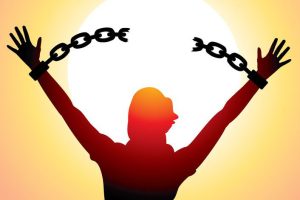 January 11 is National Human Trafficking Awareness Day in the United States. Human trafficking is modern-day slavery and involves the use of force, fraud, or coercion to obtain labor or commercial sex. Every year, millions of men, women, and children are trafficked in countries around the world. This serious crime is not just a problem in other countries – it is also happening in the United States. Human trafficking is a hidden crime as victims rarely come forward to seek help because of language barriers, fear of the traffickers, and/or fear of law enforcement. There are different types of human trafficking:
January 11 is National Human Trafficking Awareness Day in the United States. Human trafficking is modern-day slavery and involves the use of force, fraud, or coercion to obtain labor or commercial sex. Every year, millions of men, women, and children are trafficked in countries around the world. This serious crime is not just a problem in other countries – it is also happening in the United States. Human trafficking is a hidden crime as victims rarely come forward to seek help because of language barriers, fear of the traffickers, and/or fear of law enforcement. There are different types of human trafficking:
• Sex Trafficking Victims of sex trafficking are manipulated or forced to engage in sex acts for someone else’s commercial gain. Sex trafficking is not prostitution. Anyone under the age of 18 engaging in commercial sex is considered to be a victim of human trafficking. No exceptions.
• Forced Labor Victims of forced labor are compelled to work for little or no pay, often manufacturing or harvesting the products we use and consume every day.
• Domestic Servitude Victims of domestic servitude are forced to work in isolation and are hidden in plain sight as nannies, housekeepers, or other domestic help.
There are many ways to show your support to assist victims of human trafficking and to combat it in all its forms.
• Attend the Human Trafficking Awareness Event on Thursday, January 11, 2018 6-8:30 pm in the Elkhorn Area High School Auditorium. To registrar. please go to http://bit.ly/StopHT17 or contact Dawn at dtheath16@gmail.com or 262-374-1491 or contact Amanda at the UW-Extension Office at amanda.kostman@wisc.edu or 262-741-4961.
• Wearing Blue – Show your commitment to fighting human trafficking by wearing a blue outfit, accessory, and/or makeup. Be sure to take photos and share on #WearBlueDay.
• Everyone has a role to play in combating human trafficking. Recognizing the signs of human trafficking is the first step to identifying a victim. Victims can be U.S. citizens or foreign nationals of any age, race, or gender. Some basic signs a person maybe being trafficked:
o They may avoid eye contact and interaction with others.
o They show signs of malnourishment, poor hygiene, fatigue, sleep deprivation, untreated illness, injuries, and/or unusual behavior.
o They have no control over or possession of money or ID.
o They exhibit evidence of verbal threats, emotional abuse, and/or being treated in a demeaning way.
o They have a new instant love who lavishes me with gifts.
o They show signs of physical abuse, restraint, and/or confinement.
o They lack freedom of movement or am constantly monitored.
Trafficking victims can be any age, race, gender, or nationality. Trafficking victims can be men or women, young or old, American or from abroad, with or without legal status. Traffickers prey on victims with little or no social safety net. They look for victims who are vulnerable because of their illegal immigration status, limited English proficiency, and those who may be in vulnerable situations due to economic hardship, political instability, natural disasters, or other causes. The indicators listed are just a few that may alert you to a potential human trafficking situation. No single indicator is necessarily proof of human trafficking.
What to do if you suspect human trafficking:
• Do not at any time attempt to confront a suspected trafficker directly or alert a victim to your suspicions.
• Call 911 for emergency situations – threats of violence, physical assault, emergency medical needs, etc.
• Call 1-866-DHS-2-ICE (1-866-347-2423) to report suspicious criminal activity to federal law enforcement. Highly trained specialists take reports from both the public and law enforcement agencies.
• If you are a victim and need help or if you want to find support for a victim, contact the National Human Trafficking Hotline. Call 1-888-373-7888 or text HELP or INFO to BeFree (233733).





